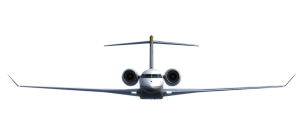AKA the Ripple Effect…
I have been in the business of business aviation for 60 years plus, and the butterfly effect has always been an amazement to me. In and of itself the butterfly effect is not a thing, but a metaphor for the principle of the chaos theory.
Enigmatically, I have found in business aviation that the chaos theory is the preferred and currently the only method or model for operations intended for business development and profitability.
Chaos theory in business aviation is best descried as charter, fractional, time sharing, piggyback chartering, empty leg flights, cards, seat sales and whatever best defines the dead-end Dunning Kruger effect of going-along-to-get-along business aviation model of the day.
Sensitive dependence on initial conditions is the tendency for complex, dynamic systems to be highly sensitive to initial conditions, so that two such systems with starting points that are almost identical may become extremely divergent over time.
So, chaos within the business aviation model never worked because divergence never happened. In the case of business aviation, learning and improving never emerged.
Business aviation started to evolve with converted war birds of WWII like the Lockheed Hudson patrol bomber, then the Lockheed JetStar in the late 50’s. Things started to change with the Lear Jet 23. But there never was a clear role for business aviation. It just cultivated randomly with zero planning, foresight, or insight. And that is where we are now–full Dunning Kruger!
The narrative coming from the Dunning Kruger world is, “Hey, I know what an airplane is!” Or better yet, “I am an actual private pilot that gets lost on an ADF approach, therefore I am qualified to run a business aviation operation.” No, you’re not.
When I got into aviation in 1962, I was too young and inexperienced to understand what I was witnessing. And what I was witnessing was the start of something big. Unfortunately, it was as completely wrong then, as it is today. Those operations would never be profitable as structured, at least not in the sense of working for everyone including owners, operators, and investors, though maybe, possibly, for the occasional grifter.
Business aviation quickly developed into an overabundance of expensive shiny playthings, but no one was steering or learning, simply because they misunderstood the tool they had, and thought the word “if,” was the key to success. So, there were no divergent corrective course changes over time. How could there be? Regarding revenue aviation, there were no ideas. There were no plans. And there certainly was no vision. Just chaos.
That meant from the very beginning, business aviation was on course to effectively become the Donner party. Making profits is in opposition to what we have come to know as “business aviation.”
The entire structure for all operations relating to business revenue aviation has been in place for decades, and never changed. The three components are the aircraft (aka the shiny objects), the FAA (aka the mean people), and the customers (aka the source of income).
So, the tools have always been there, yet business aviation is considered a joke amongst actual businesspeople. Famously Felix Dennis said, “If it flies, floats, or fornicates, rent it!” Dennis got it. Leadership never knew what they were doing, or how to fix it; a condition that never needed to be that way. This mess and these failures, are all self-inflicted and ego driven.
The essential objective is to create an environment where the three components interact flawlessly as a business revenue aviation system for the express purpose of providing a service for profit. And it can be done.
Sounds simple. It is simple. But it has yet to work. Why not?
The “why not” is this; since 1962, business aviation has been operated analogous to a fast-food restaurant or kindergarten instead of a serious moneymaking opportunity.
More correctly stated, the sensitive dependence on the initial conditions is and has always been wrong. Turns out in the case of aviation, that complex, dynamic systems to highly sensitive conditions missed the mark completely and continues to be wrong. In this case, starting points that are identical and failed to achieve extremely divergent results over time. Translation, “same old same old – going along to get along.”
There is a simple, dynamic system that will work, a system that will achieve the result that satisfies all the components and meets all the requirements. It is a system that will not only make a lot of money for everyone involved (from aircraft owners, users, operators, brokers, to investors), but adds a feedback loop of massive income while ensuring market dominance.
This should have been done sixty years ago, but the best anyone could come up with was piggyback charter, fractional, and Uber. Maybe someone should ask Tom Cruise!
So, factually the butterfly effect, the divergent ingredient of the plan never materialized.
Oh, by the way, I have created and co-founded two highly successful aviation companies starting back in 1969. Midwest Air (today DHL) at the specific request of the FRB and JSSI. Both companies are still going on internationally today, so I know it can be done…FYI, neither of them was involved in any of the sad variants known to us today as revenue aviation.
Something to understand: You cannot succeed in the aviation business if you have never been a real pilot, run real flight operations, understood call and response, or know how to improvise.
Being an aspirant is not a qualification.
Yes, I have done all those things and not in a rote way. And I can say, I really know exactly how to fix the main problem. Make the changes that will take any investor or operator to successfully dominating the revenue side of business aviation industry straightaway. If you are interested in being successful in the business of revenue business aviation let me know. And what I can bring to the table is not a ripple or divergent effect, but actual real changes, changes that change everything completely.
Contact rick.eriksen@cox.net


